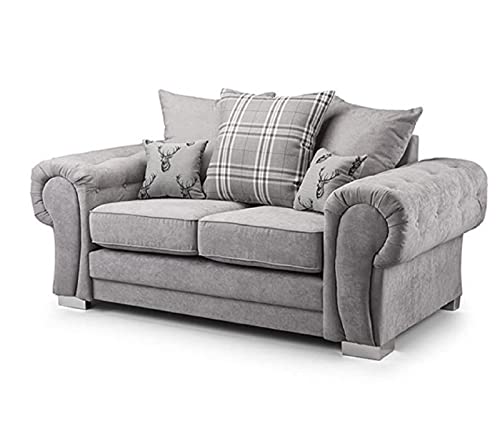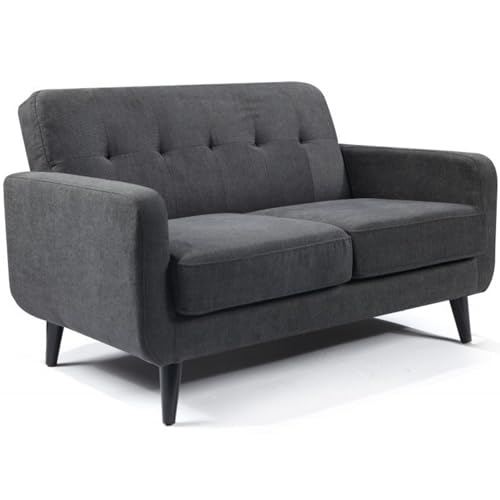Guide To 2 Seater Leather And Fabric Sofa: The Intermediate Guide In 2…
Madeleine
0
2
01.08 03:23
 Choosing Between a 2 seater leather and fabric sofa (click the following page)
Choosing Between a 2 seater leather and fabric sofa (click the following page)When you're in the market for a new sofa, it isn't easy to decide between leather or fabric. This is especially the case if you don't have much furniture experience.
If you have kids or reside in an apartment, the leather option may be a good fit for you. It is easy to maintain and looks gorgeous in a lot of homes.
Comfort
A sofa is the focal point of most people's living spaces and is a significant purchase. You want a sofa can be sat on for many hours, that looks great and will stand the test of time. Making a decision between leather and Fabric 2 seater sofas sale isn't easy It is crucial to evaluate your needs, lifestyle and budget before making a choice.
Leather is a high-end material that has a luxurious feel and radiates class in a home. It is tough and stain-resistant. It is also resistant to pets as well as children, and will last a long time if properly taken care of. However, it can be more expensive upfront and may require regular conditioning to prevent peeling or cracking.
Fabric sofas come in a wide range of colours, styles and fabrics. They can be an affordable alternative to a leather one. They are also more comfortable and more inviting, and can be "broken into" right from the beginning. They may be more susceptible to dust mites or hairs from pets and require frequent cleaning. But, with the advancement of technologies and performance fabrics, there are now hypoallergenic options to choose from.
Fabric sofas can last up to 15 years if well maintained. Regular vacuuming and deep-cleaning will help to keep the fabric clean and free of stains and odours. Like leather, they are prone to sagging and flattening over time. Many fabric couches are treated with chemicals that make them stain-resistant and flame retardant. These couches release volatile organic chemicals that could cause allergies and affect the quality of air in the indoors.
Durability
We typically choose sofas with fabrics that are very durable, particularly if you have children or pets. You don't need to spend lots of money up front when you're likely to regret it after the first stain or claw. In the same way you shouldn't purchase something that is cheap but doesn't stand up to daily use.
Leather is also extremely resilient with a tremendous tear strength. It can last for up to four times longer than fabric 2 seater sofa and is innately resistant to fading, cracking, and flaking. It can also be treated to replenish its natural oils and look as good as new.
Fabrics are cheaper and come in many different patterns, colors, and textures that can be tailored to any interior design scheme. They are also cleaner than leather and can withstand a significant amount of wear and tear, but they do tend to be more prone to moisture and can fade over time.
Microfiber is a good option for durability and is available in a wide range of colors, but it's not as durable as genuine leather and will not be able to withstand scratches. However, it's an excellent choice for families because of its resilience to spills and stains and it is easy to clean, generally with a damp cloth.
Suede On the other hand, is difficult to keep clean and can be more difficult to repair than leather. It's shape can change and feel rough if it is not regularly maintained. It is also a very thin material and therefore may not be as tough as sheepskin or cowhide.
Allergens
Fabrics can have a significant impact on allergies. It's important to know the way different options work. Fabrics tend to store allergens like dust mites pet dander, and mold that can cause symptoms of nasal allergies, hay fever asthma and eczema. These fabrics are ideal for their health.
However, leather, unlike other materials is not a reservoir of the allergens and provides a consistent level of comfort, no matter the season. It can also trigger skin irritation in those who suffer from contact dermatitis or are allergic to the chemicals used in tanning. To minimize skin reactions, it's essential to use products that are vegetable-tanned and to maintain a regular skincare routine.
Leather and fabric sofas both have a high level of durability, however the material you choose will determine how well it holds up over time. A good quality material will withstand fade or sagging and will be able to withstand spills, body oils and daily use. Modern fabric couches are often equipped with stain-resistant treatments to make cleaning simpler.
While you might not be able to completely stop an allergic reaction from the leather on your sofa, it can help to avoid allergens by keeping a lint roller close by and regularly vacuuming your living space. This will help in reducing the amount of pet hair, dirt and dust mites that accumulate on your sofa. If you are still experiencing allergies, consider replacing your sofa with a hypoallergenic model. For instance, a couch made of synthetic leather or vinyl is less likely to trap pet dander or dust mites. It can also help you breathe better.
Scratches
It is crucial to think about the amount of wear and tear you can expect the leather sofa to endure. The finish, colour and the quality of the leather are crucial aspects in how long a couch will last. It is also important to ensure that it's durable enough to withstand spillages or other accidents. This can be done by choosing a couch with a solid wood frame and high density foam cushions.
Leather is susceptible to being scratched due to various reasons, including stretching, marking territory or recovering the stress. Scratches vary in severity. They can range from minor surface scratches to severe cuts or punctures. small fabric 2 seater sofa scratches can be fixed by applying a conditioner for leather to the affected area. This will restore the balance between oil and moisture in the leather and stop it from drying out or cracking. Cuts and scratches that are deep might require a different treatment based on the severity of damage.
If you have pets, it's an ideal idea to trim their nails regularly to help to prevent them from scratching your couch. You can also redirect your cat's scratching habits by offering alternative scratching surfaces, such as sisal rope or cardboard. You can also use a pet safe furniture polish that you can apply with a soft clean cloth.
In addition to cleaning your leather sofa regularly, it is also a good idea to keep it from direct sunlight and sources of heat because this could dry out the leather. This can cause it to crack and become difficult to repair and usually requires the reupholstery. It is also a good idea to use a leather conditioner to keep the leather supple.
Smell
Leather couches are known to smell different from fabric. It's because leather is porous, and will absorb odors like body odors, smoke or food. The good news is, the smells will usually disappear after a while and especially when you use a nontoxic cleaning product that is fragrance-free.
If the smell is overwhelming, it could mean that something is wrong with the foam. This is usually caused by the chemical off-gassing that occurs in polyurethane that is derived from petroleum. If this is a problem, look for couches manufactured with CertiPUR US certified natural latex.
Another method to detect fake leather is to look for bumps or texture on the back of the sofa. This is a clear indication that it's bonded, not genuine top grain leather. You can also do a visual check by tilting the sofa on its side and observing any visible upholstery backing. If it is see any, it's likely a synthetic material like polyurethane or polyester, which will have a very different smell than real leather.
Regularly cleaning your leather sofa will help to keep it looking and smelling great. This will help keep it looking its best and smelling great and also prevent it from becoming stiff or cracked in time. Begin by vacuuming and dusting, then wiping the couch with baking soda (a natural way to eliminate smells). This is to be done every two weeks in order to remove dust or dirt. Then, apply a leather conditioner to keep your sofa's color and texture.

